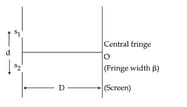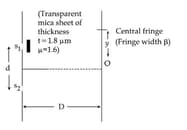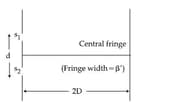MEDIUM
Earn 100
How does the interference pattern by reflection in thin films different from that by refraction?
Important Questions on Wave Phenomena (HL)
MEDIUM
Using monochromatic light of wavelength , an experimentalist sets up the Young's double slit experiment in three ways as shown.
If she observes that , the wavelength of light used is :



MEDIUM
EASY
MEDIUM
HARD

HARD
HARD
HARD
EASY
HARD
EASY
MEDIUM
HARD
MEDIUM
MEDIUM
MEDIUM
MEDIUM
HARD
MEDIUM
MEDIUM
